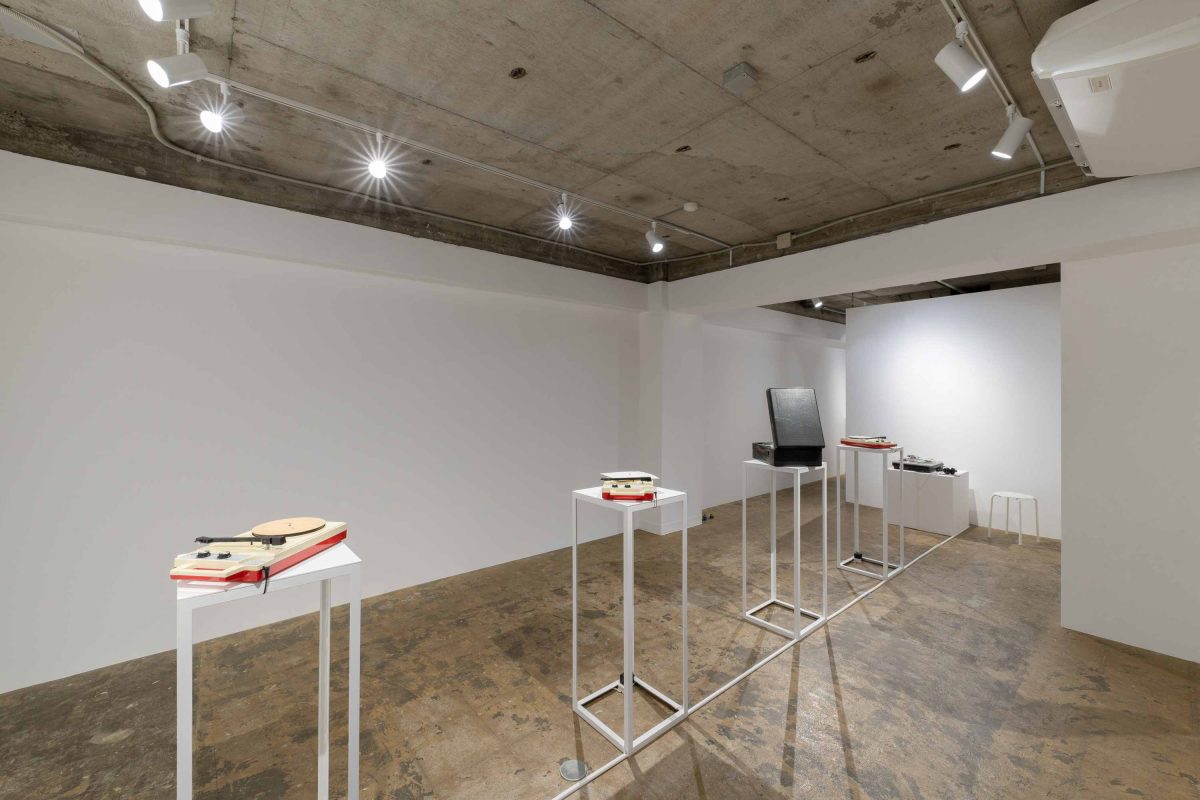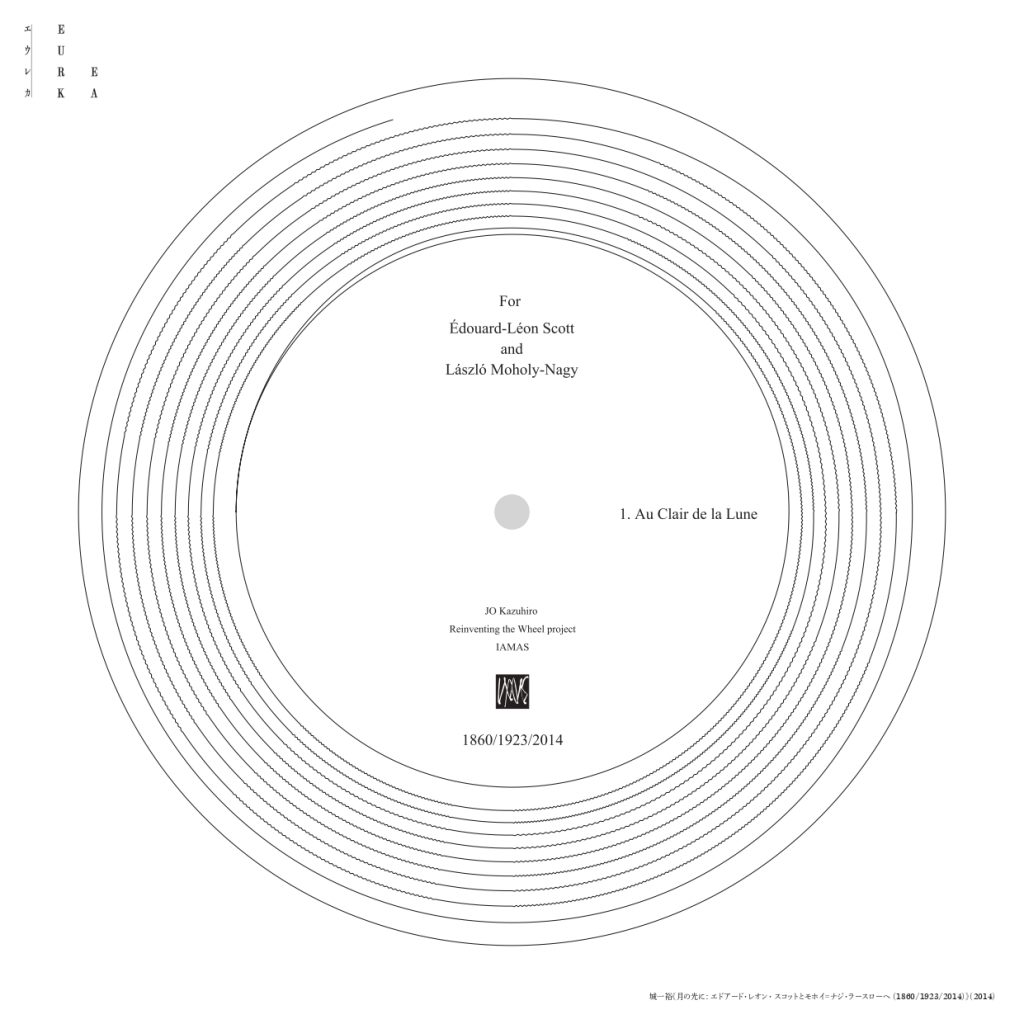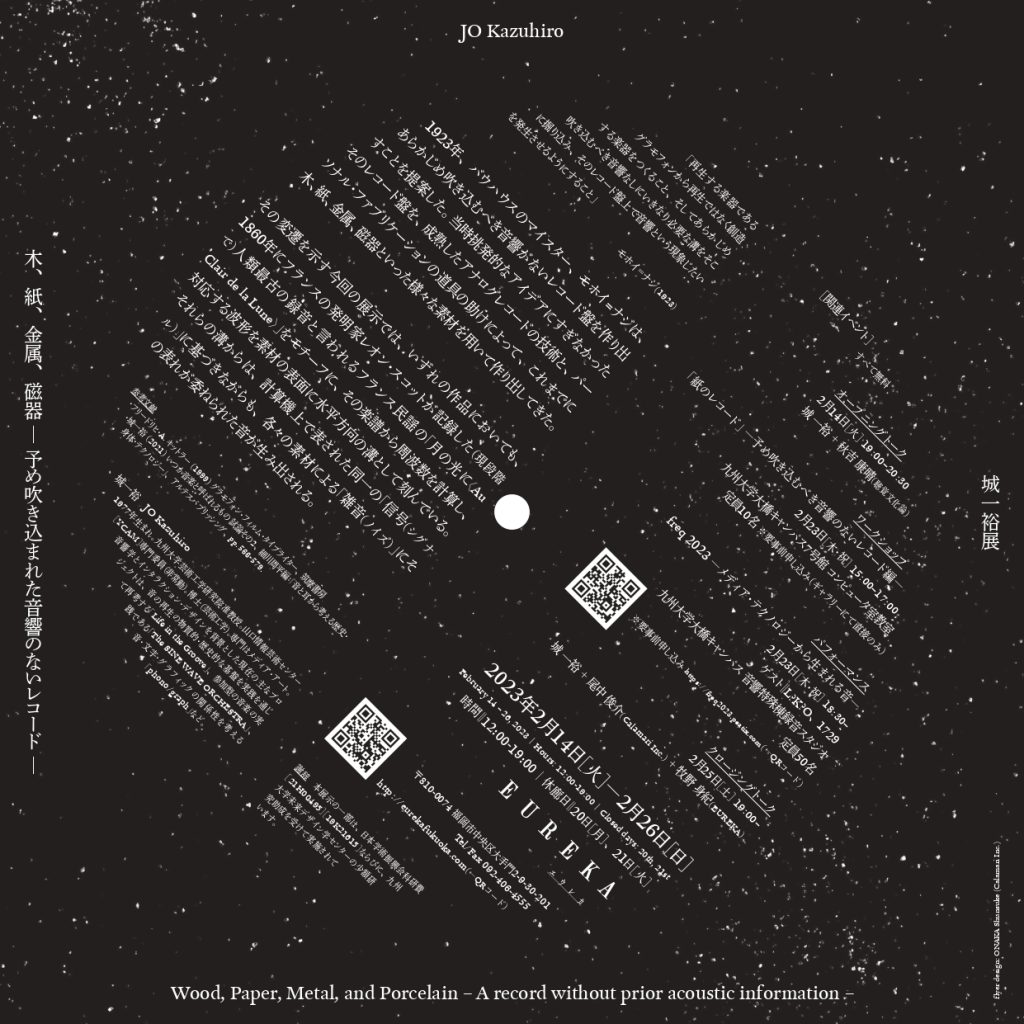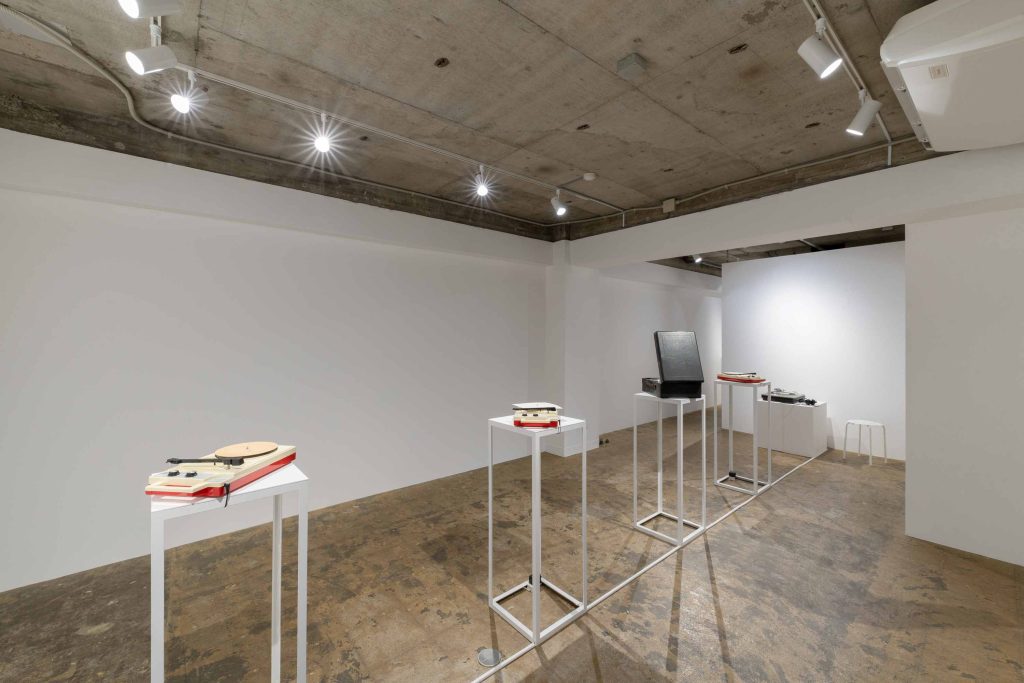ActivityWood, Paper, Metal, and Porcelain–A record without prior acoustic information — Exhibit by Kazuhiro Jo2023.3.16

Research Director:
Associate Professor Kazuhiro Jo, Faculty of Design
Keywords:
Records, media archaeology, personal fabrication
The following exhibit was held.
Exhibit by Kazuhiro Jo
Wood, Paper, Metal, and Porcelain‒A record without prior acoustic information
Venue: EUREKA
Pond Mum KIV 201, 2-9-30 Otemon, Chuo Ward, Fukuoka
Dates: Tuesday, February 14 through Sunday, February 26, 2023
Hours: 12:00 – 19:00
Closed: Monday February 20 and Tuesday February 21
Reference materials:
- Exhibit website
https://eurekafukuoka.com/1865/ - Exhibit leaflet
https://www.dropbox.com/s/nby3ya0pf9sqiqp/230211-%E5%9F%8E%E4%B8%80%E8%A3%95%E5%B1%95%E3%83%97%E3%83%AA%E3%83%B3%E3%83%88.pdf?dl=0 - Exhibit flyer *flyer design by Shunsuke Onaka (Calamari Inc.)
https://www.dropbox.com/s/mp8ikfh43kfdda6/Jo-eureka-flyer-230120.pdf?dl=0


- Exhibit photo *Photo by Shintaro Yamanaka (Qsyum!)
https://www.dropbox.com/sh/d339v56wywkxdmx/AACg5SbGB4zOAUiIaAL3DTf3a?dl=0

Description:
“I have suggested to change the gramophone from a reproductive instrument to a productive one, so that on a record without prior acoustic information, the acoustic information, the acoustic phenomenon itself originates by engraving the necessary Ritchriftreihen (etched grooves).” — László Moholy-Nagy, 1923
In 1923, Bauhaus master László Moholy-Nagy made the above proposal to produce a record without inputting acoustic information. At the time, it was simply a provocative idea. But since then, Kazuhiro Jo has created numerous such records in wood, paper, metal, and ceramics, thanks to the maturity of analog record technology and the help of personal fabrication tools.
In this exhibit, which displays the evolution thereof, each work features grooves engraved on the surface of the material representing the waveforms obtained by calculating the frequencies derived from sheet music based on the motif of Au Clair de la Lune, said to be the oldest known manmade recording, created by Édouard-Léon Scott de Martinville in 1860. While the same signals as expressed by computers emerge from those grooves, the manifestation thereof varies according to the noise produced by each different material.
References:
- Kittler, Friedrich A. “Gramophone, Film, Typewriter,” (1999).
- Hosokawa, Shuhei. “A Tentative Theory of That Which Will Someday Be Called Music, No. 2,” (2021), edited by Kazuhiro Jo, (History, Body, Technology Considered from Sound and the Ears), Artes Publishing, pp. 566-579.
The following talks, workshops, and performances will also be held during the exhibit.
- Opening talk
Tuesday, February 14, 19:00 – 20:30
Kazuhiro Jo + Yasuharu Akiyoshi (Study of Auditory Culture) - Workshop
Paper Records–Records Without Prior Acoustic Information
February 23, 15:00 – 17:00
Computer room, Bldg. 7, Ohashi Campus, Kyushu University
Capacity: 10 people *advance reservation required (reservations accepted directly at the gallery) - Performance
freq2023 – Sound Born of Media Technology –
February 23, from 18:30
Guests: L?K?O, 1729
Recording Studio, Acoustic Research Center, Ohashi Campus, Kyushu University
Capacity: 50 people - Closing Talk
Saturday, February 25th, from 19:00
Kazuhiro Jo + Shunsuke Onaka (Calamari Ink) + Miki Makino (EUREKA)
This research received a small grant in FY2022 from the Center for Designed Futures of Kyushu University.
